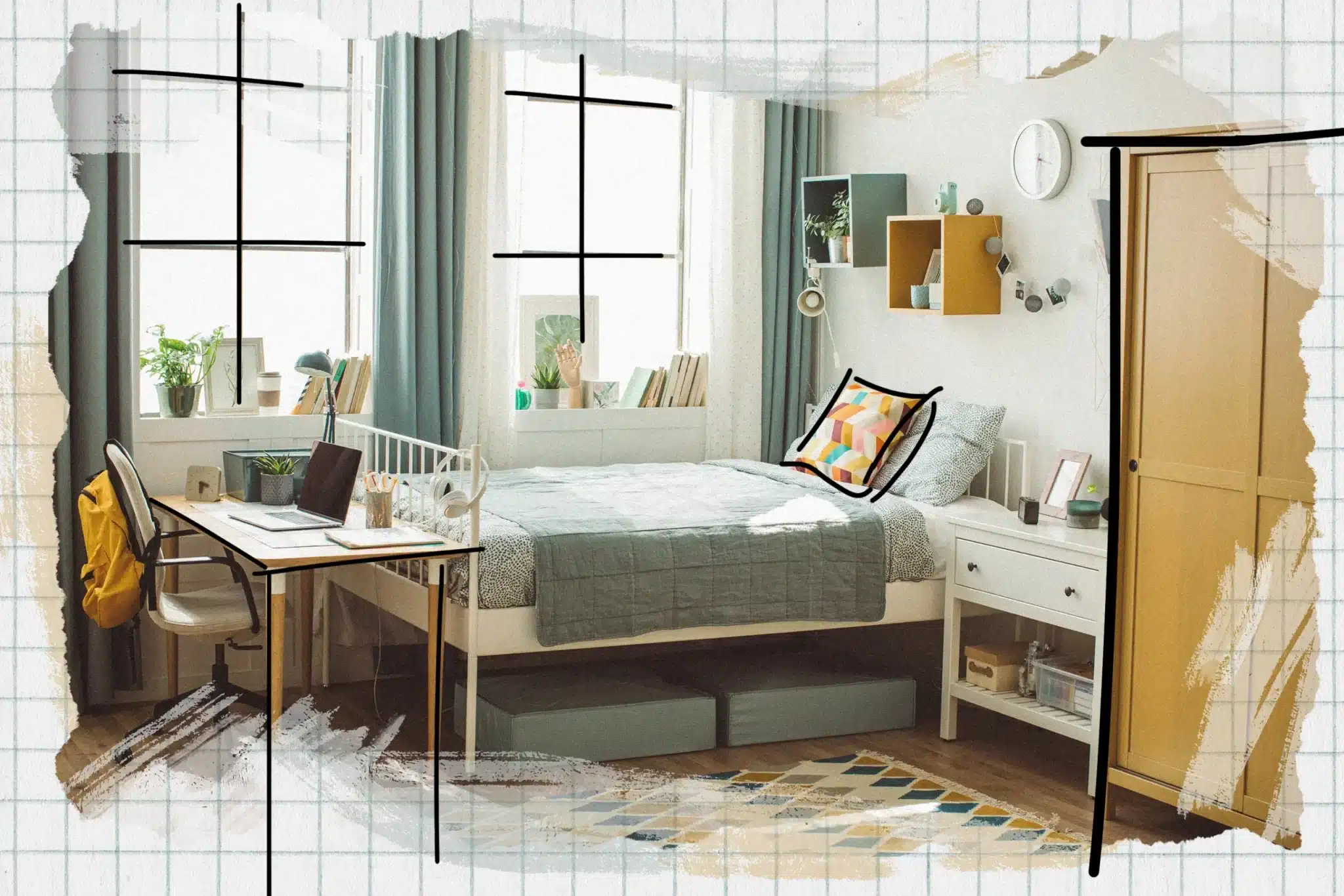College Dorm Room Decorating Mistakes and How to Avoid Them
Chances are that everyone has encountered at least one of these common decorating mistakes. However, breaking the cycle is crucial. Once you recognize these decorating faux pas, you can ensure you won’t repeat them. Crafting an appealing living space demands understanding design principles. Besides, seeking professional help can offer valuable insights. Just as decorators transform spaces, services like KingEssays.com transform academic writing. With expert essay writers, KingEssays aids students in refining their work, ensuring essays are well-structured and engaging.
So let’s move on to find out more about common dorm room decorating mistakes.
Too Many Pillows
Pillows are meant to add comfort. When there are so many on a sofa that you can barely sit down it’s far too many. Try to limit accent pillows on a sofa to two or three.
Having More than One Focal Point
Whenever possible limit your focal points to one per room. Sometimes the architecture of the room makes it impossible, but multiple focal points can make a room feel disjointed and leave the eye without a place to rest.
Not Testing Your Paint Color
Always test a sample of your wall color before committing.
Paint colors can vary drastically depending on the amount of light in the dorm room and the way natural light travels over the day. Paint a sample square on the wall and leave it at least 24 hours before making a final decision.
Buying Cheap Furniture
It can be tempting to buy inexpensive furniture for obvious reasons, but what you save in dollars you often pay for in quality. When it comes to important pieces of furniture always buy the best you can afford. (The exception to this rule is with trends – never spend too much on a trendy piece as you’ll likely tire of it sooner rather than later.)
Making Purchases Based on ROI
When you’re renovating a college dorm room it’s important to think about return on investment, but not so much when decorating. Don’t buy a piece because you think it will eventually increase in value. There are no guarantees, even with costly antiques, so only buy items you love – if they go up in value later consider it a bonus.
Not Considering Your Lifestyle
It’s important, to be honest with yourself when decorating.
If you like cuddling with pets, putting your feet up, or eating dinner while sitting on the sofa it stands to reason that you should have one that’s durable, stain resistant, and comfortable. This goes for everything in the dorm room. Don’t try to live in a room that doesn’t suit your lifestyle.
Too Many Big Plants
Plants are important, and every dorm room should have a couple. However, don’t overdo it and get plants that are going to grow so much they overtake the space. Find smaller versions that will complement the room and accessorize them accordingly.
Too Many Wood Tones
While it’s good to have some variety in wood tones in a given room, you’ll want to make sure not to use too many. Mixing woods with orange undertones and those with red can be jarring. Try to keep them all in the same color family but use different varieties.
Too Many Large Personal Photos
If you like to have personal photos on display, by all means, go for it. But extra large family portraits can be overwhelming and make roommates uncomfortable. Instead of a large portrait consider a photo wall of smaller pictures. You can still be surrounded by photos of loved ones, just in a more stylish and less intrusive way.
Not Following Pattern-Mixing Rules
Pattern mixing can transform a college dorm room from dull and ordinary to vibrant and personalized. However, it can be a tricky design element to master. Here are some guidelines to help students create a harmonious yet dynamic dorm room using pattern mixing.
Start with a Main Motif
Choose a primary pattern that will set the tone of the room. This could be a large rug, a duvet cover, or a piece of wall art. This main motif will act as the anchor for all other patterns introduced into the space.
Use at Least Three Patterns
A good rule of thumb is to use at least three different patterns. A balanced mix might include a large-scale pattern (like a floral or geometric print), a medium pattern (like a stripe or polka dot), and a small, subtle pattern.
Understand Color, Scale, and Texture
To effectively mix patterns, you need to comprehend the principles of color, scale, and texture. Keep your color palette consistent across patterns to create harmony. Play with different scales of patterns to add depth and interest. Incorporating various textures can also enhance the visual appeal of the room.
Embrace “Happy Clashing”
Don’t be afraid to mix and match patterns. Interior designer Sophie Ashby refers to this as “happy clashing”. This approach encourages creativity and individuality, making your dorm room truly unique.
Consider Your Color Scheme
Your color scheme plays a crucial role in successful pattern mixing. Mixing two tertiary colors, like orange and green, can create a vibrant and energetic space. Just ensure the patterns you choose to align with your chosen color scheme.
Using Furniture Covers to Avoid Stains
Everyone hates stains, but if you live in a dorm room where it’s likely to happen it’s better to have stain-resistant furniture that can easily be washed than covering them up with ugly old throws or canvas covers.
Decorating Too Quickly
A comfortable and inviting room can’t be created in a day. Take time to decide what you want, search out the right things, and don’t make rush decisions. A room will naturally evolve so don’t try to hurry and finish it all at once. Chances are you’ll be disappointed with the results.
Inadequate Lighting
Lighting is arguably the most important element in any room. Make sure you have the appropriate mix of ambient, tasks, and accent, and be sure to place lights at different levels throughout your room.
Summing Up Checklist
- Too many pillows can make a sofa unusable, stick to two or three accent pillows.
- Have one focal point per room for the eye to rest on.
- Test paint colors before committing; they may appear differently due to lighting and natural light changes.
- Invest in quality furniture that will last more than trends that won’t last long.
- Don’t buy pieces only based on ROI, buy ones you love and consider any increase in value a bonus.
- Pick furnishings that work with your lifestyle – comfy, durable, and stain-resistant items are must-haves.
- Too many large plants can take over the room; stick to smaller versions and accessorize accordingly.
- Don’t use too many wood tones in the same color family; it can look jarring.
- Instead of large photos opt for a photo wall of smaller pictures instead.
- When pattern mixing: start with a main motif as an anchor, utilize at least three patterns of different scales & textures, embrace “happy clashing” and keep your color scheme consistent across patterns.
- Use furniture covers to avoid stains but don’t rush into decorating – let it evolve naturally.







